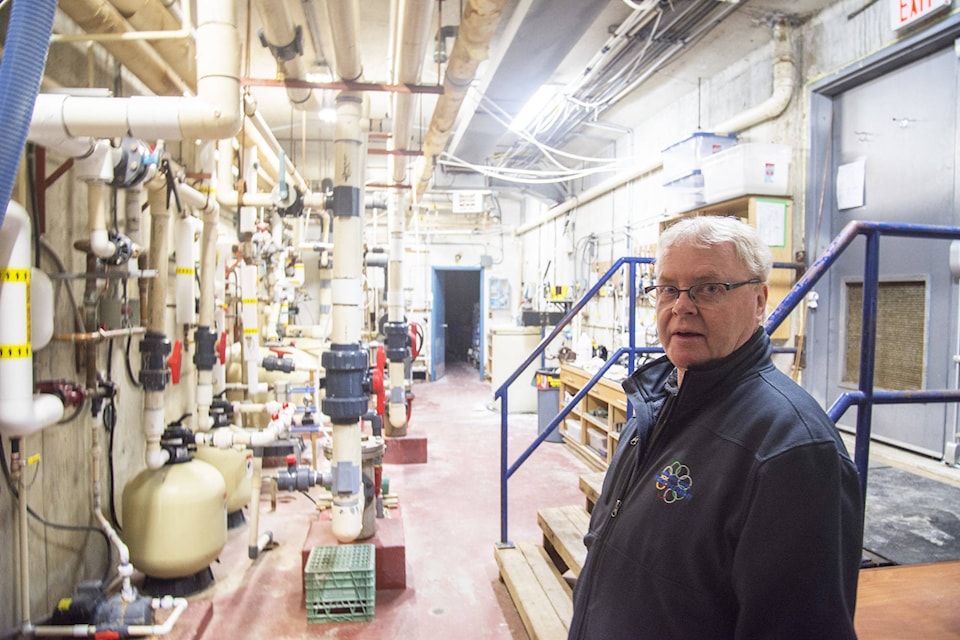The pool at the SASCU Rec Centre is showing its age. A tour of the inner-workings of the pool facility, shows somewhat outdated filtration equipment and decaying structure of the pool itself.
The City of Salmon Arm’s 2012 parks and recreation master plan acknowledges both the demand for pool facilities and the challenges with maintaining the aging facility.
“This facility is vitally important to residents and has served the community well for decades, but it is also at a point where minor repairs and upgrades may not be adequate to ensure uninterrupted operation. In addition to the condition of the facility, there are also space constraints that limit the number and range of programs that can be offered,” the master plan reads.
“Our biggest problem is capacity and trying to fit everyone in the pool,” said Dale Berger, general manager of the Shuswap Recreation Society.
Berger said with as many as 50 people in some aquafit classes which run approximately 10 times per week at the pool, there is often only one lane remaining open to lap swimmers while aquafit is on.
Barry Healey, head coach of the Columbia-Shuswap Selkirks said capacity negatively impacts his team’s training schedule, particularly during the summer months when they have to share the pool with the Salmon Arm Sockeyes.
“This week, as of today, I lost 60 per cent of my pool time,” he said.
Healey said the Selkirks had previously been able to run two-hour practices, five nights a week. They are now only able to practice on Monday and Wednesday evenings, as well as morning practices six days a week. He added that training volume is essential for elite-level swimmers and the more restrictive practice times lead to retention issues for swimmers who live outside Salmon Arm.
The most pressing maintenance issues are with the gutter system surrounding the pool. The rebar which reinforces the concrete structure of the pool is beginning to break down. As a result, rust seeping through the pool wall has lead to complaints of stains on people’s swim suits. Berger said a similar issue at a Vancouver pool cost $1.5 million to fix. There are also electrical problems such as a major conduit rusting in the caustic environment below the pool deck.
Behind the scenes, the two boilers which heat the pool and the building are only four-years-old and were the most efficient system possible when they were installed, however they are only running at 80 per cent efficiency due to the age of other components the interact with.
The pool’s filtration system is original and has been in use since the pool opened.
The pool is chlorinated using chlorine gas, a method which Berger acknowledged is the most dangerous, but also the cheapest. The chlorination has lots of safety features including automatic shut offs which few pools have. Berger describes it as totally compliant with safety regulations.
Berger said in order to expand the existing facility the only available direction is to the west on to the former Orchard House property which the city recently purchased.
“The next process that we’re looking at is public engagement and my hope is that happens in the next year or two to determine what the public really wants in a facility. Once we determine that we can decide how to move forward,” Berger said.
